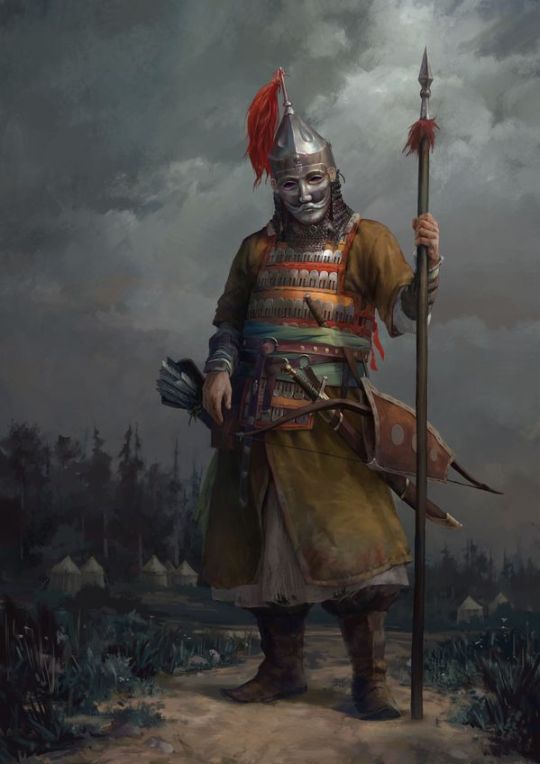#cuman
Explore tagged Tumblr posts
Note
i love your kcd oc !!!!!
THANK YOUUUUUUUUUUUUU, i am so HAPPY that someone like them! i will get here more of my oc anezka and can tell you something about him :3
so anezka, he is intersex polish peasent (more specific from śląsk which was in czech's hands in XV century). because of his apperance he didn't bother to do manly job and dress up as bathmaid to get a coin. he is asshole AND I SHIP HIM WITH DRY DEVIL



and my fav pieceeeeeeee

i am also creating another oc, but it's just sketches (and he dont have name yet!!! but he is cuman :3

#digital art#artist on tumblr#kcd2#dry devil#kingdom come deliverance 2#kcd oc#original character#artist on twitter#cuman#wip#concept art#character design
20 notes
·
View notes
Text

Happy to share a painting I made a few years ago!
This is a female warrior from the medieval Volga Bulgar era; Steppe warriors from the east who settled in Central Europe.
Hope you like it!
Best,
JCH
#dungeons and dragons#board games#concept art#fantasy art#tabletop games#magic the gathering#character design#digital painting#ancient history#armor#turkic#viking#cuman#warrior#knight
452 notes
·
View notes
Note
Have you played Kingdom Come: Deliverance 2? Every time I hear Hungarian in the game, I think of you for some reason. LOL
I thought it would make more sense to start with the first game, so that's what I'm playing right now, but I plan on playing the 2nd one after! At least this way there will be plenty of mods out by the time I get to it.
My brain always gets confused when I hear the Cumans yelling in Hungarian and a minute later people are speaking to me in English. I understand both and it feels like I'm not supposed to. I do wish the Cumans screamed louder and said more foul things, 'cause you hear way worse just by taking the 4-6 tram in Budapest. It's just not that scary when they're supposed to be savages but actual middle schoolers use cusswords that would make them blush.
This is about the volume I would expect them to come at you with:
youtube
Transcription: NO! NO! NO! I'll KILL YOU! I'll KILL YOU! I'll KILL YOU! ... YOU WHORE!
#ESPECIALLY considering everyone was fucking drunk half the time#I mean I know they're not technically Hungarians I guess#but if we're gonna speak Hungarian at least allow them to be more foulmouths#Cam once heard “FASZSZOPO” on the tram and it's his favorite now :D#it means “cocksucker”#personal#text#demontalk#Kingdom Come: Deliverance#Cuman#youtube
102 notes
·
View notes
Text



A nearly 1,000-year-old Polovtsian "Baba" (warrior) statue was evacuated from the frontline near Hektova Balka and transferred to the Dmytro Yavornytskyi National Historical Museum in Dnipro. The 3rd Brigade’s Khorunzha Service conducted the rescue under heavy shelling, saving the statue from destruction by Russian forces. A member of the service stated that the statue would be returned to its original location after the war but would undergo research at the museum in the meantime. This is the second Polovtsian sculpture saved from the frontlines in recent months. The Polovtsi, also known as Cumans, were a nomadic Turkic people who inhabited the area north of the Black Sea and left a lasting influence on Kyivan Rus and other kingdoms. Their "Baba" statues, found throughout Eastern Europe, were erected between the 11th and 13th centuries as sacred tombstone figures representing ancestors. More than 2,000 have survived, though many are now threatened due to their proximity to the war zone. Photo 3: Polovtsian stone sculptures (babas) of IX-XIII centuries on Mount Kremenets in Izium city (Kharkiv Oblast) after Russian shelling during the Battle of Izium in 2022. One statue was completely destroyed by a projectile. Nearby monument to WWII heroes (in the background on the right) is partially destroyed. (Photo: Wikipedia) —Euromaidan Press
Photo credit: Oleksandr Alfyorov FB
97 notes
·
View notes
Text

Yea sorry I suck at art but Cuman Miku.
#miku worldwide#miku world tour#kingdom come deliverance#cuman#henry of skalitz#hans capon#warhose studios#kingdom come
33 notes
·
View notes
Text
The Cuman-Kipchak, Tatars and Masked Helmets
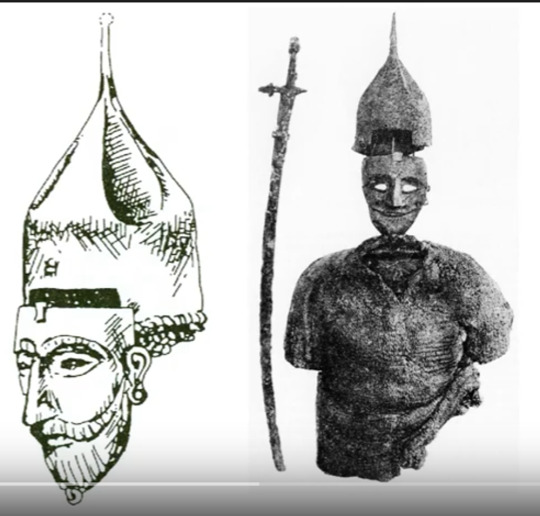
In popular perception it is very common to associate masked helmets such as the ones found in Kovali (picture above) or Lipovets with the Cumans. This has been portrayed in media as well, for example in Age of Empires II and later on very notably in Kingdom Come: Deliverance. However this attribution is in reality mostly without basis, but to understand why we first have to look at its origins, and to do that we first need to talk about who the Cuman-Kipchak are and how they relate to the Tatars.
The Cuman-Kipchak are known for having a significantly powerful confederation in Eurasia which was at its height at the start of the 13th century. While sometimes claimed that the Cumans and Kipchaks were two different peoples, it is more likely that the two names are simply synonyms for the same conglomeration of people, whom would have been made up of a lot of various turkic groups living under the confederacy whose land was often called Cumania by christian sources and Desht-i Qipchaq by Islamic ones. Hence from this point on I will refer to them simply as Cumans.
The Cuman confederation was famously broken up due to the Mongol expansions, which caused groups of Cumans to flee westward. Some ended up settling in Hungary, while others ended up in Rus lands and yet others were conquered and assimilated by the Mongols. What is important to note here is that the Cumans cannot be thought of as one unified group of people all with the same customs, because they were not. This is even more emphasised post-Mongol conquest as the Cumans who settled in various different lands would have gradually adopted to the customs and culture of the lands whom they settled, and this will be important to determine where the famous masked helmets fit into all of this. But before that, let's briefly talk about the Tatars. Tatar was simply a catchall term for the Mongols, and is thought to originate from Persian though to my knowledge it is a term mainly used by European sources. As the Mongols continued to conquer people and incorporate them into their empire, the definition of Tatar would also encompass any and all groups which had become part of the Mongols and were serving in their armies. After the breaking up of the empire into the four Khanates, the term Tatar came to mostly be used to refer to the Golden Horde, which at this point incorporated lots of Turkic people into it including Cumans. Hence the term Tatar does include Cumans in it, but it is not a synonym as it would not include Cumans who were not part of the Golden Horde as it's explicitly related to the mongols. The Cumans who were part of the Tatar Horde are at this point already becoming pretty distinct from the Cumans who are not, and as time went on these differences started to grow even more. The Cumans in Hungary for example are noted to gradually adopt to Hungarian customs, and by the 15th century they cease to keep their signature hairstyles and clothes, and grave finds of Cumans from that time period include a lot of materially hungarian items.
So then, masked helmets. The two famous examples mentioned above (Kovali and Lipovets) are both from Golden Horde territories. Some older russian research tends to for some inexplicable reason associate them with Cumans whom they call Polovtsy, sometimes claiming that they potentially predate the Golden Horde. However there is not really any evidence pointing to this and the masks found bear a lot of resemblance to later 15th and 16th century Persian ones, indicating that they date to the days of the Golden Horde (the shape of the skulls are also most akin to post-mongol examples). What is even more important is that masked helmets of this type have not been found in gravesites associated with Cumans or other turkic peoples outside of the Golden Horde which would indicate that these helmets are in fact something that relate to the Mongols rather than the Cumans.
Now obviously as mentioned earlier the Golden Horde did contain Cumans in it, and so a Cuman serving as a cavalryman in a Tatar army could very well have used a helmet like this. However there is nothing pointing towards the claim that the Cumans themselves were who brought these helmets to the Horde, as no archeological finds support this argument. Rather it's that these are armours which would've been used by anyone part of the Horde, including Cumans, however would also not be found outside of direct Mongol influence. For example, a Cuman settled in Hungary would not have used a helmet like this since he wouldn't be living in a culture to adopt it from.
Which reaches the conclusion that these are Tatar helmets and should not be thought of as Cuman helmets.
Funnily enough the portrayal of Cumans in Kingdom Come: Deliverance heavily conflates Tatars and Hungarian Cumans and treats them as interchangeable, which they were not. While they in-game claim that the Cumans roaming bohemia in the game are from Hungary, their portrayal is wholly unfitting for that but would make significantly more sense if they were to be considered Tatars where the presence of the masked helmets would make sense (although most other 'cuman' gear in the game is entirely unfitting for a historical portrayal of either Tatars or Cumans in the early 15th century, but that's a post for another day).
15 notes
·
View notes
Text
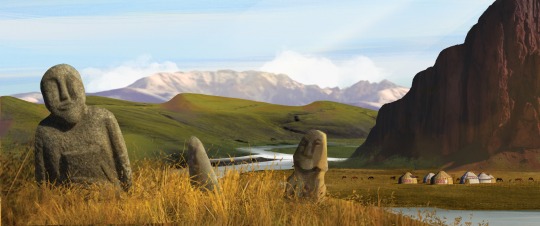
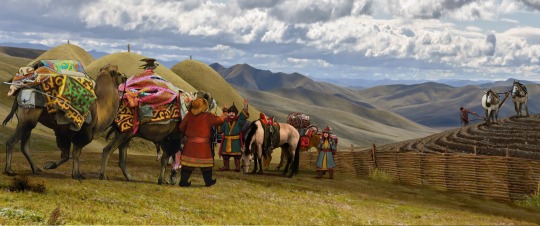

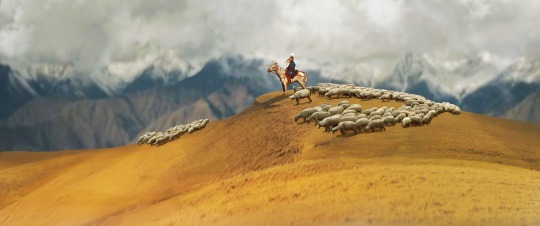

4 notes
·
View notes
Text
youtube
Part 3 of the Mongol heavy cavalry series is now up!
#mongol empire#chinggis khan#genghis khan#heavy cavalry#khwarezm#delhi sultanate#cuman#Qipchaq#kipchaks#Youtube
3 notes
·
View notes
Text
feeling strangely compelled to make a KCD cartographer OC responsible for drawing up the entire game's map(s). a harried, elusive and strange man with many strange alliances.
#i mean you have to be a bit odd and brave to go /everywhere/ so you can draw it up#also you must have peculiar and dangerous connections to be able to obtain access into lesser known & dangerous lands#and to be able to obtain existing maps from such people#i just think it would be very fun because a character like that has the potential of being acquaintances with everyone from#sigismund and ruthards to the devils den gangs and cumans#kingdom come deliverance 2#kcd2
30 notes
·
View notes
Text

Here is a painting I made a few years ago + some edits.
This is a female warrior from the medieval Volga Bulgar era; Steppe warriors from the east who settled in Central Europe.
Hope you like it!
Best,
JCH
#dungeons and dragons#board games#concept art#fantasy art#tabletop games#digital painting#magic the gathering#character design#ancient history#armor#medieval#cuman#bulgar#bulgaria#mongol#turkic
405 notes
·
View notes
Text
Oh no, ive started to master combat in KCD.
Im murder-hobo:ing again 😐
22 notes
·
View notes
Text


juma mubarak ✨
78 notes
·
View notes
Text
Found the first quest where I just NOPEd out of. Bellatores as a concept is all nice and all but I'm absolutely not fighting with some idiot noble I barely know - and I want to emphasize that: we were two. TWO men - against a horde of cuman warriors. Absolutely not. What do I care about that brother of his. Is it my lovely brat Hans Capon, almightly lord of Pirkstein? NO! It's not. Therefore: NOPE. I literally took tail at the very last second, after he refused to do it my way (stealth at night) and wanted to go on with his stupid idea of just running right into their arms and getting surrounded. Also I stole his sword. By accident. I will take this as payment for even acknowledging this foolish attempt of a plan and go somewhere else. Thank you very much.
#kcd2#nope#as an afterthought#i hope i will not see that dude again and he was killed by the cumans#otherwise that might become a bit awkward
8 notes
·
View notes
Text
they're giving me a horse and sending me off with the soldiers to hunt the cumans when I literally died five times trying to save hans from just two of them 5mins ago 😭
#nothing important#I cannot believe I'm saying this but#when do I get to do some of the side quests xDDD#kcd#medieval czech game#also I need like. at least a nee pair of boots I beg you#edit: ok not the cumans thank god
5 notes
·
View notes
Text
watching early on scenes with hans and henry again. and the amount of dialogues and words spoken that were referenced and recalled in the second game. remembered so fondly by the two at times as well. sighs.
#i'm getting my daily fix to cope. it's fine. i'm fine and normal#time to keep drawing hans in slutty medieval nobleman outfits. to cope further#hearing henry tell hanush 'i was only doing my duty sir' when talking about saving hans from cumans#but then later on when he falls in love with him he tells hans directly 'it's not about duty'. fuck me sideways really
4 notes
·
View notes
